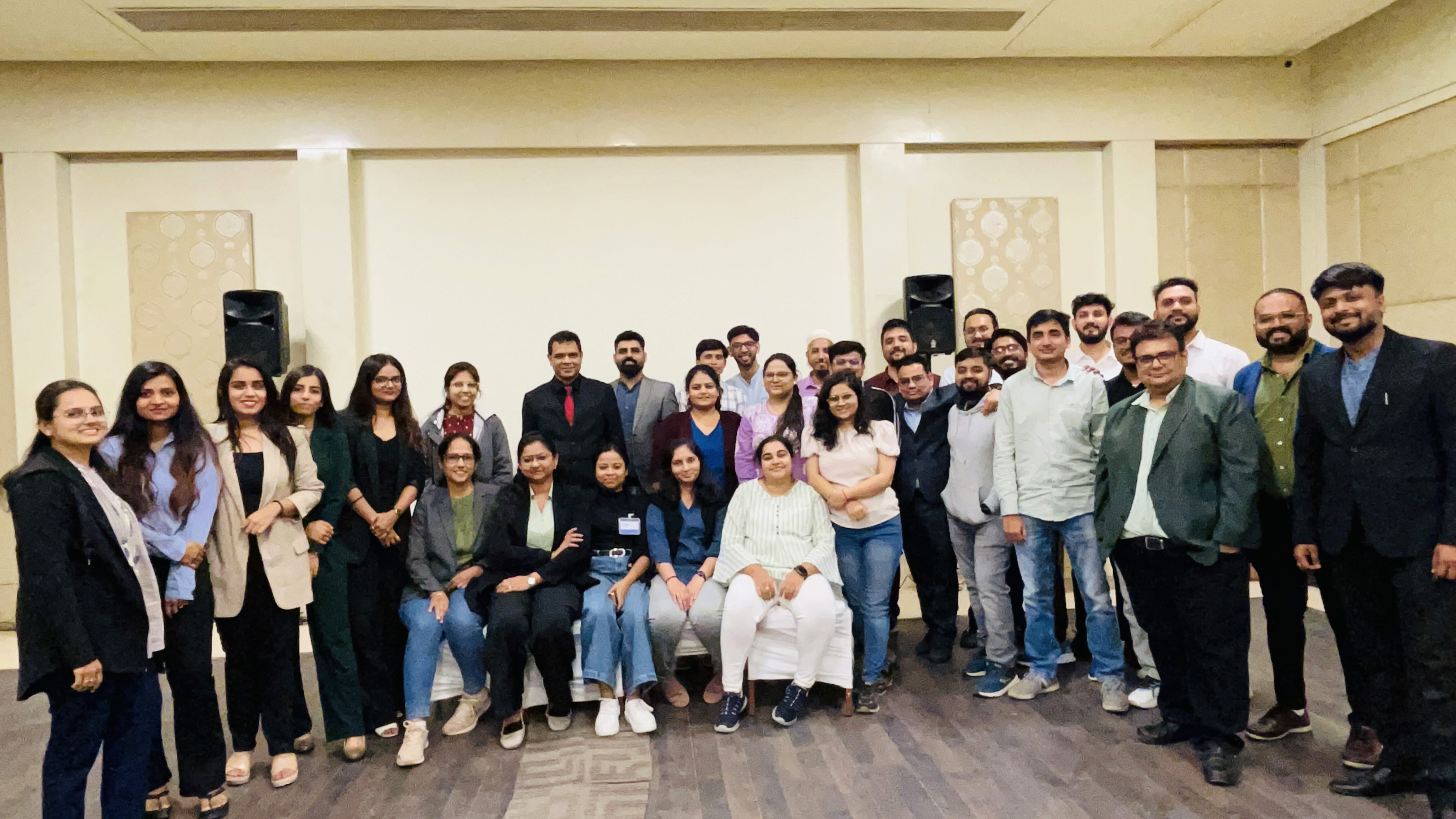What is Hyperledger?
Hyperledger is an open-source, global project, hosted by The Linux Foundation. It was launched in 2016 by a global collaboration of 30 founding corporate members with a technical & organizational governance structure.
Hyperledger aims to create blockchain, enterprise-grade solutions to solve problems and advance cross-industry blockchain technologies. Currently there are more than 270 organizations with IBM & Intel as its major contributing members. The list also includes other industry leaders & tech giants like Airbus and Daimler, IT companies like Fujitsu, Huawei, SAP, Nokia and Samsung, financial institutions like American Express, Deutsche Börse, BBVA, J.P. Morgan, BNP Paribas, and Wells Fargo and, Blockchain startups like Netki, Lykke, Factom, Blockstream, and Consensys.
According to the creators, “Hyperledger is all about communities of software developers building blockchain frameworks and platforms to resolve business problems through transactional applications that have trust, accountability, and transparency at their core while streamlining business processes and legal constraints”.
What are Hyperledger frameworks?
Hyperledger has six projects or frameworks which have been listed for your understanding.
Hyperledger Fabric
Hyperledger Iroha
Hyperledger Sawtooth
Hyperledger Indy
Hyperledger Burrow
Hyperledger Besu
1. Hyperledger Fabric
Hyperledger Fabric is driven under IBM’s leadership and is one of the most widely adopted frameworks.
Brian Behlendorf, Executive Director of Hyperledger says that, “If you have a large blockchain network and you want to share data with only certain parties, you can create a private channel with just those participants. It is the most distinctive thing about Fabric right now.”
Hyperledger Fabric is a revolutionary, enterprise-grade permissioned, distributed ledger framework used for developing blockchain solutions and applications. Its modular architecture allows a plug and play of components like consensus and membership services and helps entities in carrying out confidential transactions without passing on the information through a central authority. So, we can say the while preserving privacy, Hyperledger Fabric offers a unique approach to consensus which enables performance at scale.
2. Hyperledger Iroha
Hyperledger Iroha is hosted by The Linux Foundation. This framework has been inspired by Hyperledger Fabric but is different from all other frameworks because it focuses on mobile app development with Android & iOS client libraries.
Its algorithm is known as “Yet Another consensus and the ordering service” which is a unique crash, fault-tolerant, chain-based algorithm and is written in C++. Soramitsu, Hitachi, NTT Data, and Colu have contributed in the creation of this framework.
The infrastructure projects that require distributed ledger technology can use the Hyperledger Iroha framework as it has a simple design, is modern, domain-driven and can be easily incorporated into the existing systems by developers & business owners.
3. Hyperledger Sawtooth
This framework supports permissioned & permissionless deployments and is highly versatile as it allows scalability for a network of validator nodes.Intel has greatly contributed in developing this framework.
Hyperledger Sawtooth utilizes the modular platform for building, deployment & running the distributed ledgers. The distributed ledgers furnish a digital record that can be maintained without any central authority and implementation. Hyperledger Sawtooth by default uses the consensus algorithm known as Proof of Elapsed Time (PoET) based on network’s size which helps in achieving scalability of Bitcoin Blockchain with minimal energy consumption.
4. Hyperledger Indy
Hyperledger Indy is also a “distributed ledger purpose-built for decentralized identity”. This framework allows the creation and usage of independent digital identities rooted on blockchains or other distributed ledgers by enabling interoperability across administrative domains and applications.
The core benefit of using distributed ledger technology (DLT) in this framework is that it puts people & not organizations in charge of the decisions about their privacy and disclosure. This results in the secure handling of digital identities while having human values at its core.
5. Hyperledger Burrow
This framework was originally contributed by Monax & is now hosted by The Linux Foundation. It provides a modular blockchain client with an in-built, permissioned smart contract interpreter partially developed to the specification of Ethereum Virtual Machine (EVM).
The main components of Hyperledger Burrow are:
Gateway: provides interfaces to integrate systems with user interfaces
Smart contract application engine that helps in integrating the complex business logic
Consensus Engine serves the dual-purpose of ordering transactions & maintaining the networking stack between the nodes
Application Blockchain Interface (ABCI) provides an interface specification to connect the Consensus engine and smart contract application
6. Hyperledger Besu
Hyperledger Besu is an open-source Ethereum client, written in Java and developed under the Apache 2.0 license. This framework can be run on the Ethereum public network, test networks such as Rinkeby, Ropsten, and Görli, as well as on any private permissioned networks.
Hyperledger Besu has various consensus algorithms that include PoW, PoA, and IBFT. It consists of comprehensive permissioning schemes that are specifically designed for use in a consortium environment. Hyperledger Besu has:
Secure & most advanced permissioning for most complex use cases
Enterprise-grade stable consensus for fast finality & high transaction throughput
Dependable privacy to ensure control of shared private data
Familiar Java-based, cloud base & Ethereum tools as well as intuitive features for easy-boarding & scalability
What is Hyperledger Composer?
Hyperledger also consists of various toolsets like Hyperledger Composer, Caliper, Cello, Explorer, and Avalon.
Hyperledger Composer is a collaborative toolset that simplifies the development and deployment of blockchain business networks. It is open-source and has domain-specific languages for Modeling, Query & Access-control to simplify the development.
The primary goal of Hyperledger Composer is to allow integration of various blockchain applications easily into the existing business systems, thus accelerating time to value. It also becomes easy to create smart contracts for business owners and developers to solve business problems.
Since Hyperledger Composer allows speedy creation and deployment of use cases, prototypes & solutions, the blockchain applications can be deployed within weeks rather than months and can be integrated easily with the existing business systems.
Hyperledger Composer runs on Hyperledger Fabric but lacks some of its features. However, the benefit of using Hyperledger Composer is that it allows you to generate code with less effort because if you would be using Hyperledger Fabric, you would have to write the code by yourself instead of generating it.
Moreover, Hyperledger Composer is built with JavaScript so it uses modern tools like node.js npm, CLI & other popular editors and also offers sample apps with easy-to-test DevOps processes that can help create robust blockchain solutions to resolve various modern-day business problems. It also helps in the alignment of technical development with business requirements. Hyperledger composer consists of:
A modeling language called CTO: A domain modeling language that defines a business model, concept, and function for a business network definition
Playground: Used for the rapid configuration, deployment, and testing of a business network
Command-line interface (CLI) tools: The client command-line tools are used to integrate business networks with Hyperledger Fabric
Use Cases
1. Healthcare
IBM Watson Health & U.S. Food & Drug Administration (FDA) have come together for a research initiative that aims to use blockchain technology in defining an efficient, secure & scalable exchange of health data.
IBM and the FDA are exploring the exchange of owner mediated data from various sources like clinical trials, Electronic Medical Records, genomics data and health data from the mobile devices as well as data from wearables and the “Internet of Things.”
Currently, patients have very little or no access to their healthcare data and are unable to share it with the researchers or providers. So, the initial focus of providers and researchers is to have access to a 360-degree view of patient data in the oncology section of healthcare and increase the possibilities of providing transformative healthcare solutions.
This collaboration will provide an opportunity for such patients to share their data securely with their healthcare providers for research purposes and help create opportunities for major advancements in healthcare.
The Hyperledger blockchain technology will make it a reality for such patients to their data securely which will help the organizations in working together with more trust & confidentiality. Additionally, having an audit trail of such transactions on an unalterable distributed ledger will establish transparency & accountability in the data exchange process.
2. Managing the shareholder’s data
Borsa Italiana S.p.A is the Italian stock exchange based in Milan that organizes, manages, and regulates the domestic market procedures for admission & listing of companies and intermediaries. It also supervises the disclosures for listed companies.
Borsa Italiana & IBM have joined hands to work on a blockchain solution and are taking a lead in altering how European SME’s are managing their shareholders’ data while providing credit access and are building secured and trusted digital solutions to link them with a broader and mature ecosystem.
The London Stock Exchange is also working with IBM & testing the use of blockchain technology in the financial business network where data segregation and confidentiality are the keys to securing & storing the data of various companies.
This solution uses Hyperledger Fabric version 1.0 framework and is built on a highly secure infrastructure with the highest level of encryption that ensures the security of highly sensitive data of stocks & securities while storing and sharing it amongst the permissioned network participants. This solution will also achieve interoperability, efficiency & business continuity when integrated with the existing systems of The London Stock Exchange.
While concluding this, it can be said that Hyperledger is the latest & most secure technology available in the market that will help in developing encrypted & efficient cross-industry blockchain solutions. Companies should take advantage of various Hyperledger frameworks and build blockchain solutions that can be used by industries like supply chain, healthcare, energy preservation, reduction in carbon emissions, etc.

We are a family of Promactians
We are an excellence-driven company passionate about technology where people love what they do.
Get opportunities to co-create, connect and celebrate!
Vadodara
Headquarter
B-301, Monalisa Business Center, Manjalpur, Vadodara, Gujarat, India - 390011
Ahmedabad
West Gate, B-1802, Besides YMCA Club Road, SG Highway, Ahmedabad, Gujarat, India - 380015
Pune
46 Downtown, 805+806, Pashan-Sus Link Road, Near Audi Showroom, Baner, Pune, Maharashtra, India - 411045.
USA
4056, 1207 Delaware Ave, Wilmington, DE, United States America, US, 19806

Copyright ⓒ Promact Infotech Pvt. Ltd. All Rights Reserved

We are a family of Promactians
We are an excellence-driven company passionate about technology where people love what they do.
Get opportunities to co-create, connect and celebrate!
Vadodara
Headquarter
B-301, Monalisa Business Center, Manjalpur, Vadodara, Gujarat, India - 390011
Ahmedabad
West Gate, B-1802, Besides YMCA Club Road, SG Highway, Ahmedabad, Gujarat, India - 380015
Pune
46 Downtown, 805+806, Pashan-Sus Link Road, Near Audi Showroom, Baner, Pune, Maharashtra, India - 411045.
USA
4056, 1207 Delaware Ave, Wilmington, DE, United States America, US, 19806

Copyright ⓒ Promact Infotech Pvt. Ltd. All Rights Reserved
